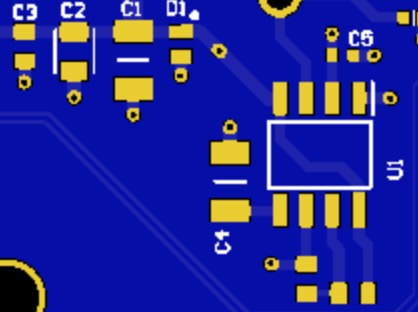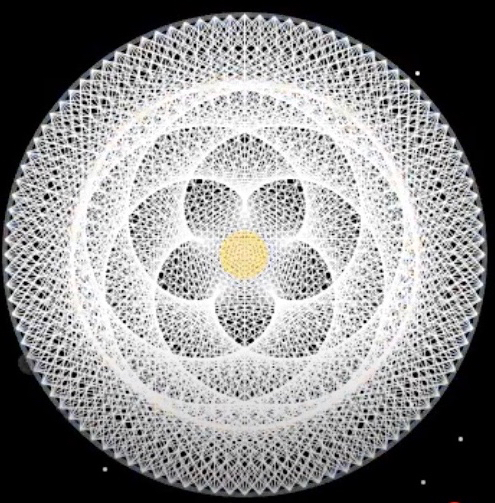Exact Measurement? For Innovation, and Progress
A coherence-based Noise Reduction System, approaches a time-independent reference, or exact standard, for the measurement of time. Download summary of scientific research here.
A New Digital Transformation Making The 4th Industrial Revolution Truly Sustainable

Areas of Application of Coherence Technology Pdf download here: https://www.upgradingtechnology.com/support-files/areasofapplication.pdf
We're taking on the responsibility of re-defining the upcoming 4th Industrial Revolution to ensure sustainability. Why bother building an unsustainable house of cards which will inevitably collapse in a few decades? Why not do it right and make it sustainable? Why not build to last? Why not build to a new level of alignment with the laws of physics and the laws governing the structure and function of our universe? Why not raise our development to an entirely new standard?
A digital revolution/transformation need not clash with natural systems. And if we build our systems right, progress need not be limited, while we attempt to 'save the planet'. When our technological progress is in step with the sustainable progress of the ever-expanding universe, there is no clash between our digital systems and our living environment. We take our cue from the sustainability we find in natural systems, to make our digital systems work better and last longer without interfering with the inter-workings of our planetary ecosystem.
How do we align our digital transformation with the expansion of the universe? When in Rome...
The easiest way to align with the universe is to follow the universal laws which make the universe sustainable. Digital is, by definition, signals broken into pieces, bits, and then we put them back together. One critical, and often overlooked, factor essential for putting the bits back together as perfectly as they were before, is precision measurement. Now they say measurement uncertainty is inevitable. And it is indeed inevitable when our standardized measurement system is based on approximation. All upgrades to our standards for measuring time are aimed at reducing measurement uncertainty. But our progress in this area is never to the level of precision measurement found in natural systems. Even the NIST, responsible for setting the standards for measurement, readily admits that the new Quantum SI is still based on approximation. What does nature know about obtaining exact measurement that we do not know?
Finding a way around the limitations of approximation to make our digital signals more dynamically stable and more sustainable
What happens when we are able to reduce measurement uncertainty? When you reduce measurement uncertainty, you increase both accuracy and precision together. Both the signals and the system as a whole become more stable over time, even across extended networks, including the Internet of Things (IoT). The new digital transformation will lay the foundation for the 4th industrial revolution and it will be based on the shift from static stability found in today's digital technologies--which results from our present accuracy bias--to dynamic stability. This shift to a new level of dynamic stability, is based on an advanced approach to noise reduction which reduces measurement uncertainty. This shift will enable unrestricted growth of complex networks, including the unlimited expansion of the Internet of Things (IoT).
What threatens system stability, holds back progress, and can lead to complete collapse of a system?
What makes a system unstable? Noise, measurement uncertainty, static stability, lack of resilience, insufficient self-organizing power, insufficiency of a coherent hierarchical structure, all these factors put a system at risk, and lead to disappointment and frustration. To reduce the likelihood of problems, precision measurement, brought about through a new approach to noise reduction, enables a system to be more dynamically stable, more resilient, with greater self-organizing power, and greater phase coherence between the different levels of its hierarchical structure. In a word, greater precision in measurement allows a system to be more sustainable.
Our digital transformation can benefit from the precision found in a universal standardized measurement system
Why wouldn't we want to ensure our digital transformation include the same accurate and precise measurement system used in the construction of natural systems, such as our universe? Our universe seems to have the ability to sustain itself virtually forever.
Precision measurement in this case is both accurate and precise. Our standardized measurement system with all its great advances is still based on approximation. In an attempt to overcome the limitations of approximation our standardized measurement system has developed an accuracy bias, which creates a static kind of stability. This static stability is incompatible with the dynamic stability found in natural systems, which have an absolutely precise measurement system . This natural precision can be clearly seen in the motion of the planets. In the following short video we see the perfection and beauty of natural precision: https://www.youtube.com/watch?v=p9mG149Nfrk

An example of precision in measurement found in natural systems. This is the pattern of the path taken by the planet Venus in relationship to the planet earth as show in the video above
Transitioning from Newton's time to the modern era, we reach the heart of the matter concerning technological evolution and "digital transformation." Henri Poincaré, with his astute perception, highlighted a distinct limitation entwined within the fabric of our technological advancements: the confines of approximation. He made it vividly clear that all our measurements, regardless of their precision, are inherently approximate, a truism that remains despite our leaps in technological prowess.
So as we gateway into the epoch of our digital transformation, we grapple with the challenge of our pre-existing accuracy bias. How do we engineer our digital technologies to surpass the inherent limitations of measurement approximation, a characteristic that often results in frequency and amplitude discrepancies, thereby disrupting our suave technological motion and making it more unnatural?
The industry-standard strategy to lessen measurement uncertainty by subdividing time into minuscule fractions only inflates these discrepancies into billions and trillions, without ever reaching an endpoint of measurement uncertainty. Tech engineers have come to accept the infeasibility of exact measurement, recognizing the presence of measurement uncertainty as an inherent 'bug' in the system.
The larger our ambitions grow for our technologies – both in terms of miniature and grandiose scale – the more this measurement issue magnifies. A practical, effective and simplistic approach to curtail measurement uncertainty is the need of the hour, a revolutionary method that will fortify the foundations of our digital transformation, ensuring it aligns with the cosmological constants that have been pivotal to the construction of our sustainable universe.
When such an approach is effortlessly implemented, our digital transformation, or revolution, will find a harmonious rhythm, marching in tandem with the symphony of cosmology. Our technological future hence sits at the precipice of an exciting era, poised for new revelations and breakthroughs that will redefine the journey of "digital transformation."